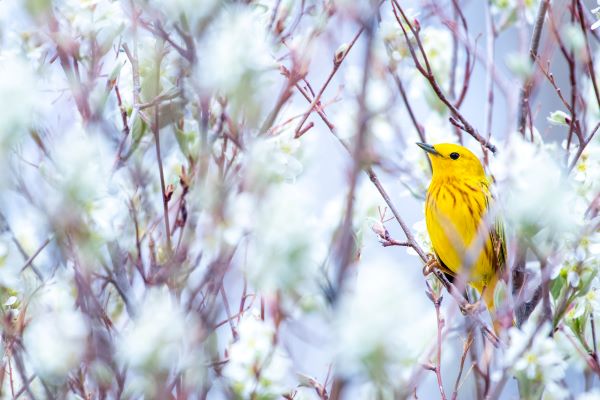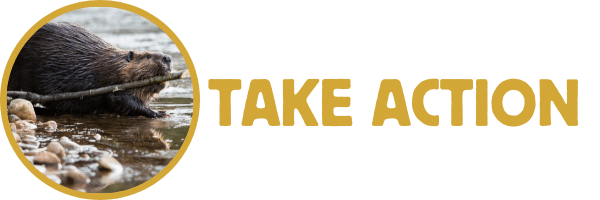
‘Tis the season for giving thanks, and we couldn’t be more thankful for Oregon’s beautiful array of fish and wildlife, majestic forests, breathtaking coastline, and pristine waterways that make this state one of a kind. As much gratitude as we feel for this special place, we acknowledge it would be much more difficult to push back against those who seek to undermine it without your tenacious advocacy! So thank you for your support, and please join us for our next Wild Ones advocacy training so that we can continue to fight like hell together for the wild places and wildlife we cherish.
Read all the way to the bottom of this update to learn about other opportunities and actions you can take to make a difference for Oregon’s wildlife.

Earlier this month, Oregon State Police reported that in Grant County, an elk hunter shot a wolf in “self-defense.” While we have supported the right of people to kill wolves if they are being attacked or caught in the act of killing livestock, it’s always hard to verify what exactly transpired (and how much someone’s safety was in question) before shooting the animal. In this particular instance, the hunter says he waved his arms and yelled, but the wolf came directly at him. Instead of shooting his gun in the air, however, he shot one round at the wolf and killed it instantly.
What feels unsafe and ignites fear, of course, varies for everyone. Statistically speaking, it’s incredibly rare for a wolf to attack a human. If you layer on society’s deep-seated fears about the species plus years and years of being told about the “big bad wolf” - it’s no wonder people are quick on the trigger.
Science and Research:
To help usher in a new era of coexisting with carnivores, scientists have been at the forefront of research to determine more effective ways of improving and implementing coexistence strategies. Recently, several renowned large carnivore scientists (including one from Oregon State University!) hosted a panel to discuss just that. Here is the recording for your viewing (and learning) pleasure.
In 2019, the Oregon legislature passed a bill requiring the Oregon Department of Fish and Wildlife to develop a wildlife corridor action plan. More specifically, it set the stated goal “to preserve long-term habitat connectivity for wildlife. The plan shall provide guidance for all state agencies to develop benchmarks for the designation and protection of wildlife corridors in Oregon.”
We’re happy to report that the final draft of the Wildlife Corridor Action Plan was just released. While wildlife conservation organizations did provide some specific feedback on the Plan (mostly around ensuring it will be effectively implemented), overall, this provides a great roadmap and tool for ODFW, land managing agencies, and other entities to use to safeguard important corridors and habitat that benefit a wide range of wildlife species. In particular, we were happy to see the inclusion of designated Priority Wildlife Connectivity Areas (PWCA). According to the Plan, “these are the foundation of the Wildlife Corridor Action Plan—a map of areas for which designation of wildlife corridors, land acquisition, or other actions are of high priority to protect wildlife movement or habitat connectivity. PWCAs include both areas of good quality habitat in intact, relatively undisturbed parts of the landscape, as well as the best remaining marginal habitat to help wildlife navigate through developed or degraded areas.”
This Plan, and the specific PWCSs, will allow groups like Oregon Wild to advocate for better habitat protection before ODFW and other natural resources agencies who approve projects detrimental to wildlife and their habitat.
Unrelated, but good news nonetheless, the Yurok Tribe in Northern California released three more California condors onto their ancestral lands last week, bringing the total number of free-flying condors to 11. This progress to restore condors back to their historical range is not only culturally significant but ecologically important in the effort to recover one of the most endangered species of all time. For more information about condors, please check out our resource page.
c
Six years after the Eagle Creek Fire in the Columbia River Gorge, we’re happy to see that the pika population is rebounding!
If you’ve been to the Oregon coast, you’ve probably seen a jellyfish or two washed up onto shore. For those who ever wondered what kind of clear blob they’re looking at, here’s a really neat article (with photos) about the state’s most common jellyfish.
While the Klamath region is known for its rich, biodiversity; drought, climate change, water misallocation, and more have presented multi-faceted challenges that need all hands on deck to address. This story of how local resident Karl Wenner turned his polluted fields into a thriving wetland sanctuary brings hope to a dire situation.
We have two wonderful Wild Webcasts to round out the rest of 2023! The first one, called The Comeback of Nature’s Fastest Animal, will discuss the incredible recovery of the peregrine falcon. Our second webcast, A Wild Promise, features renowned author Terry Tempest Williams and beautiful illustrator Allen Crawford, who will take us on a storytelling journey about the important role the Endangered Species Act has played in combatting extinction and recovering species for generations to come.

The U.S. Fish and Wildlife Service (USFWS) is considering more protections for the Northwestern Pond Turtle (NPT) - one of only two turtle species native to Oregon. This vulnerable species has been in decline for years due to habitat loss and fragmentation, poaching, movement barriers, and the list goes on. Listing the NPT as ‘threatened’ would ensure the species is put on a path towards recovery. The good news is that the USFWS already agrees that listing is needed, “After a review of the best scientific and commercial information available, we find that listing the northwestern pond turtle and southwestern pond turtle is warranted.”
Though that statement is incredibly helpful, it’s not a guarantee that the NPT will be added to the endangered species list without public support from people like you. It would be turtle-y awesome if you could submit a comment to the USFWS in support of listing the turtle as threatened. Deadline is December 4th.
In the face of the extinction crisis, we can’t allow another species to slip through the cracks on our watch. Please submit a comment urging the USFWS to give the Northwestern Pond Turtle the protections it needs!



